Most individuals spend more time at their desks or workstation than they do at home. The workstation should be a place that you are able to be productive and comfortable but unfortunately, for many, the workstation is a place associated with stress, discomfort and often times, pain in the neck and back.
Below we are going to give you 5 practical tips in order to optimize your workstation so that your body feels great at the end of the workday and you don’t need to be distracted by neck and back pain during your workday.
1. Ensure the Brightness and Text size on your screen are appropriate
This first pointer for workstation ergonomics is one that is often overlooked when an individual is looking to make their workspace neck and back-friendly. The reason that improper brightness and text size can affect neck and back pain is that if you cannot read your screen you will be more inclined to lean forwards towards your computer, resulting in excessive protrusion of the chin, upper back flexion, and lower back flexion.
2. Place your Desk and Chair at a height that allows you to sit upright
Often times, individuals will neglect the importance of chair and desk height for ergonomic safety and health. Ideally, you want to have your chair at a height that allows you to have two feet on the floor and allow your forearms to rest on your desk.
If your desk is too high, you will be required to have your arms higher and ultimately this will lead to tension in the neck as well as an increased likelihood of carpal tunnel syndrome. Conversely, If the desk is too low, you may be more likely to lean forward or flex your spine excessively to reach the level of the screen.
3. Have lumbar support on your chair to maintain your natural spinal curvature
Contrary to popular belief, your spine is not meant to be “straight”. Your spine has three distinct curves and is shaped more like the letter “S”. When individuals sit for an extended period of time, they are likely to round their lower back. Naturally, the lower back is meant to hold a slight arch, meaning that sitting oftentimes reverses its intended curvature.
Over time, when this flexed position of the lower back is held for an extended period of time, you are likely to experience lower back discomfort. We often recommend to our patients to use a Mckenzie Lumbar Roll or purchase a chair that allows them to maintain a normal lumbar curvature.
4. Take breaks regularly to move your hip and hips through a full range of motion
Microbreaks are an area of workplace ergonomics that most individuals partake in by necessity. After sitting for hours working on a project, it is natural to walk to get up, stretch, and walk around. Though walking around the office for a few minutes is a great start, we want you to be even more specific with your microbreaks. We recommended getting up for 5 minutes from your desk every hour or two.
While sitting at work, generally, the joints of the spine, as well as your hip and shoulders, are in a flexed position. Standing and walking, however, are positions considered to be relatively neutral. We know that joints love to be moved in all directions regularly, so what we want to do during our microbreaks is not only stand and walk but actively extend our joints. Here are some examples of extension based movements that can be performed during your breaks at work!
5. Practice Proper and Controlled Respiration through your abdomen
Proper respiration is one of the most significantly overlooked aspects of posture, ergonomics, and even physical activity. When individuals become stressed at work, their posture breaks down and they begin slightly hyperventilating (taking quick breaths).
Taking these short, choppy breaths forces you to use your shoulder elevator and neck musculature to assist in the breathing process. This causes a buildup for tension in the upper back and neck and puts small degrees of compression through your spine.
By focusing on expanding your abdomen while breathing, inhaling through your nose and exhaling through your mouth, you will be able to decompress your spine, protect your lower back and inhibition the muscles of the neck that commonly contribute to pain and tightness.
For more details on how to breathe properly and begin to train for respiration, please see the video below.


